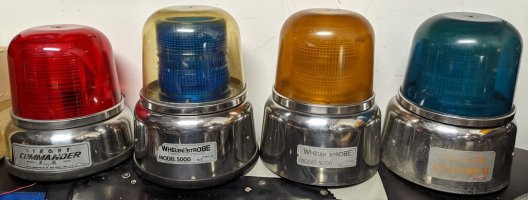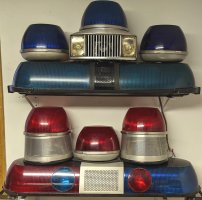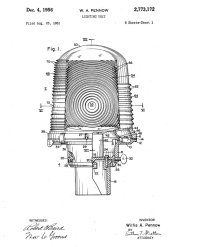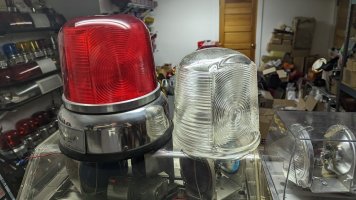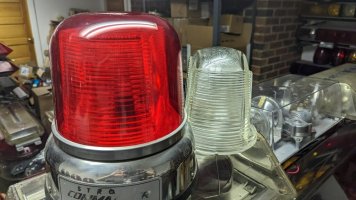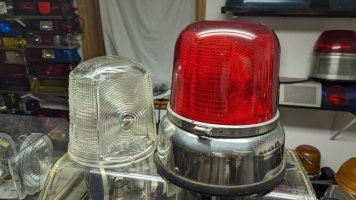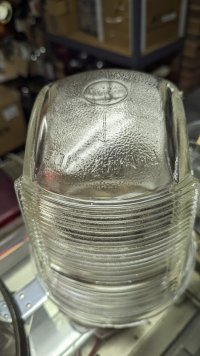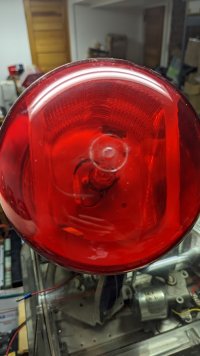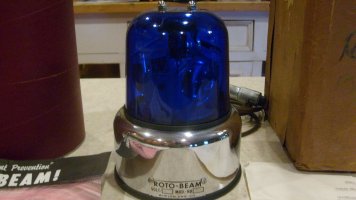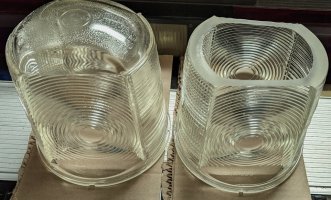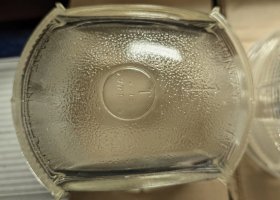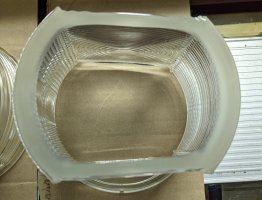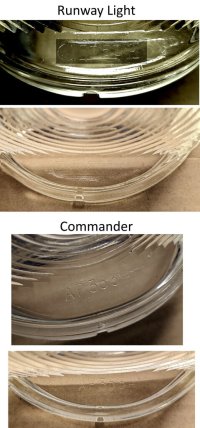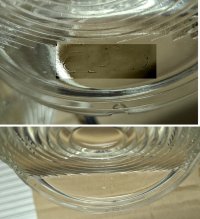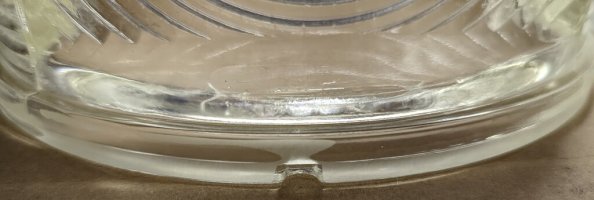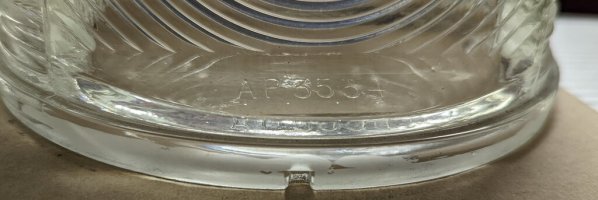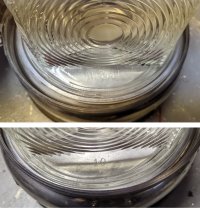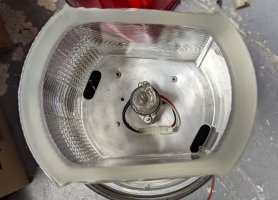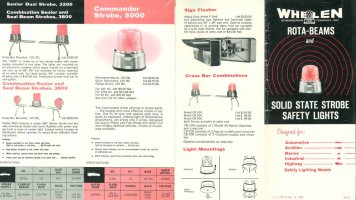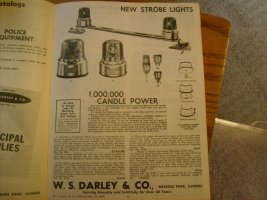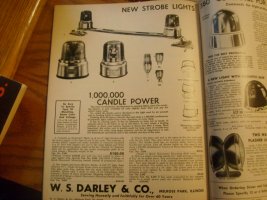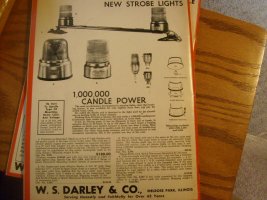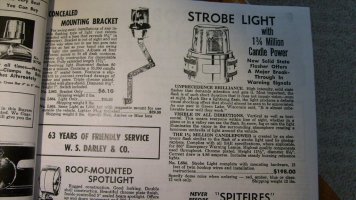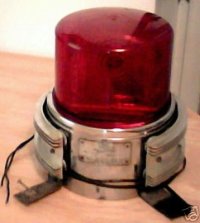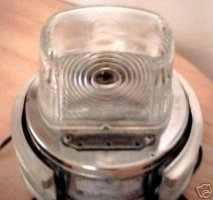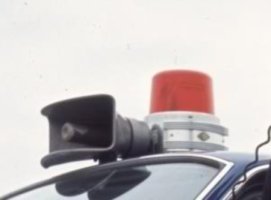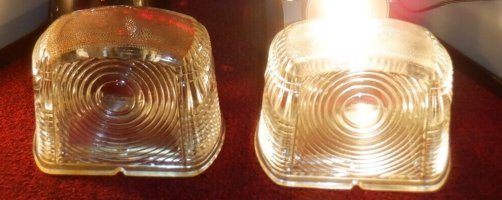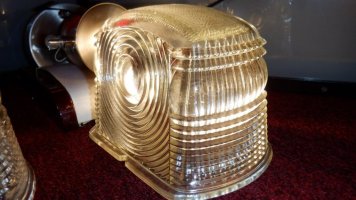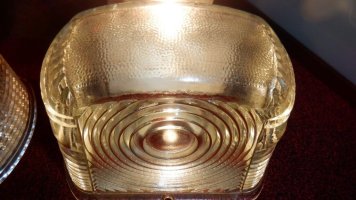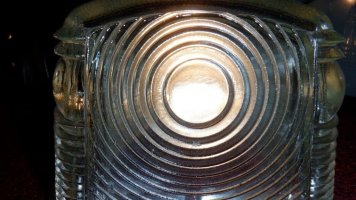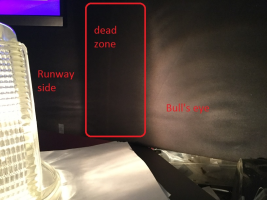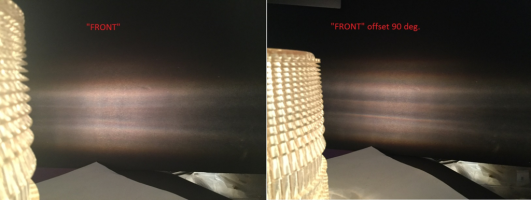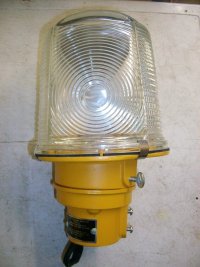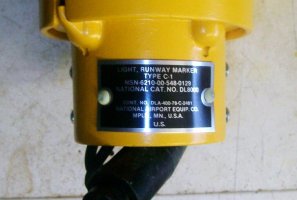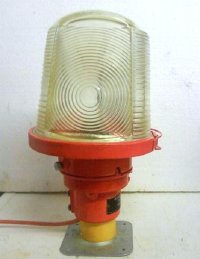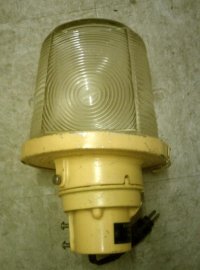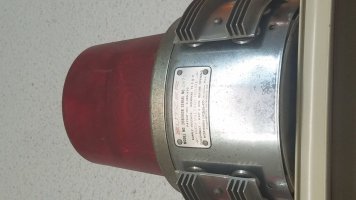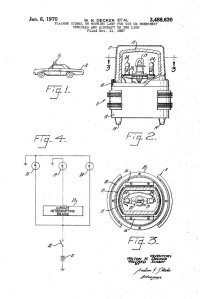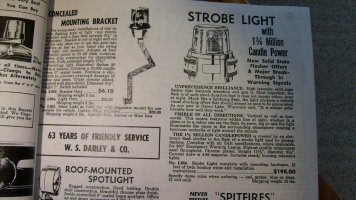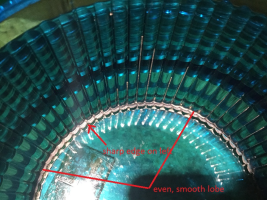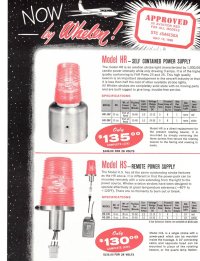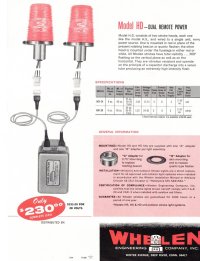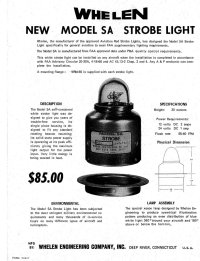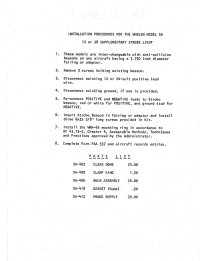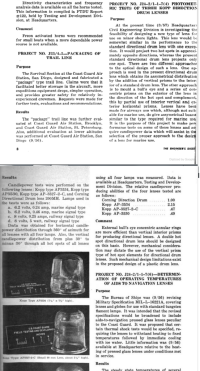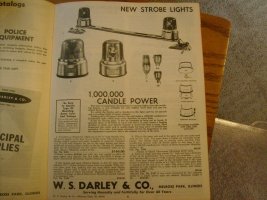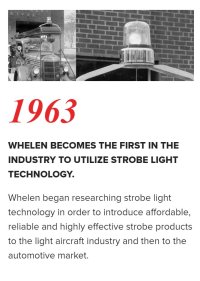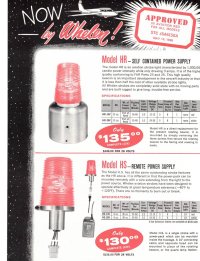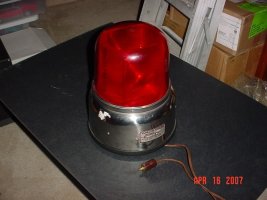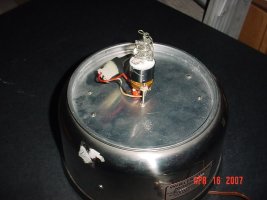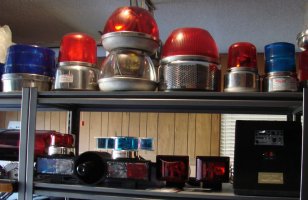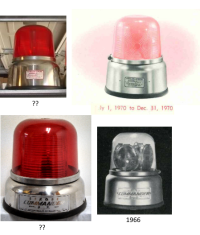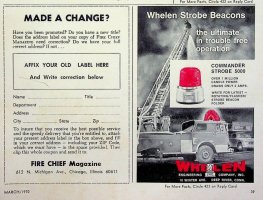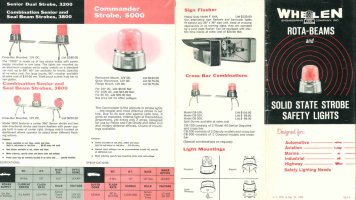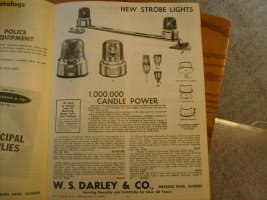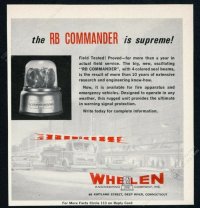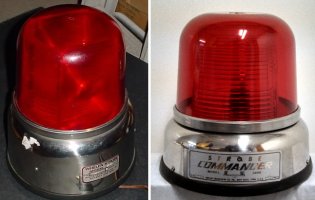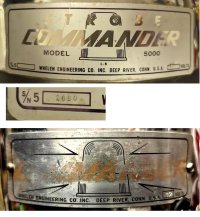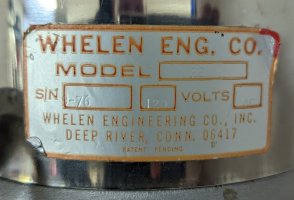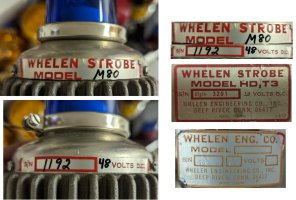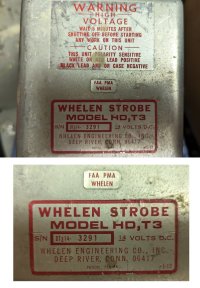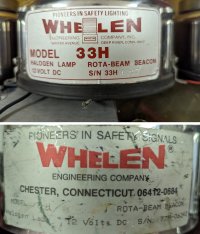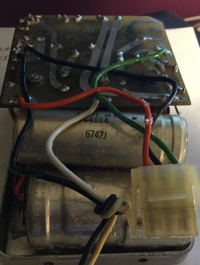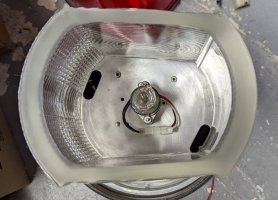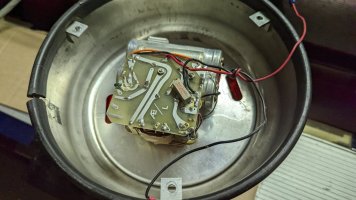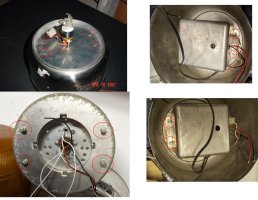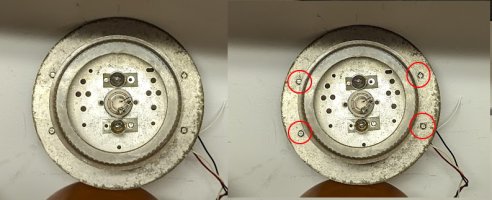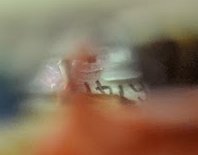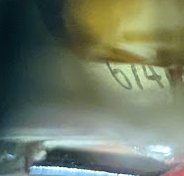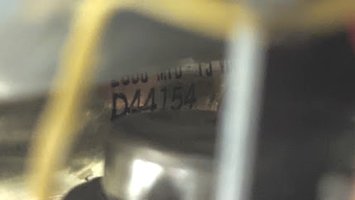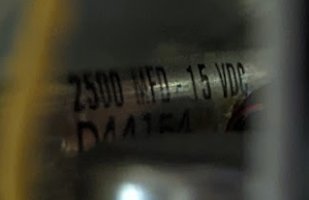Here is
another update to the timeline for the Commander
Early Automotive Offerings
1956- Rotabeam moves to automotive market, Whelen's first automotive offering
1963?- Aviation strobes move to the automotive market (per Whelen website), no other documents.
Glass Optics Version Strobe Commander 5000
1965/66- Larger versions of the rotabeam in strobe and incandescent are launched called "Strobe Commander" and "Rotabeam Commander". The Strobe Commander uses a glass internal optic borrowed from runway lights referred to as “bullseye optics”. These beacons use a simple aircraft power supply board, often exposed.
1968- The Strobe Commander is still pictured and listed as having "glass bullseye optics". It still uses a modified aircraft “AE” board in single flash. Serial numbers are formatted 5-XXXX
Lexan Optics Version 5000
1970- The Strobe Commander is listed as having "lexan" internal optics (but pictured with glass), the actual style in these years is unknown, likely a cross over period as the parts for the newer lexan optics were being used in other products. These beacons use a power supply resembling more complex aircraft supplies sealed in a metal case.
1971/72- The Strobe commander (5000) can be found with the newer style internal optics in the field (we lack a catalog currently), still in single flash.
1975/76- The Commander (only strobe now, 88x series is the rotating version and the oscillating version is gone) is confirmed to have the new internal optics in catalogs. At this time the 5000 becomes double flash with a "Strobe II" label. Serial numbers change from 5-XXXX to 5/2/XXXX. The power supplies continue to look like metal boxes similar to the standalone supplies being sold.
5200 Commander
1979- Catalog "8" (1978) still has the smaller 5000 commander, catalog "9" (1979) has the 5200 commander and the 88x series is replaced the 99x series. The PA version of the 5200 has round holes in a matte finish metal base. The power supplies are “pie pan” style and have the components flattened into the pan and exposed; no longer stacked like the box style. The optics are “flying saucer” style.
1983- The base of the PA versions of the 5200 become polished with horizontal slats vs. round holes. The optics are now a cylinder held by springs which resemble the later superstrobe.
1986- The 5500 is debuted. This is a separated front/rear version with “V” tubes and a divider for single side cutoff. Power supplies resemble gen 1 edge in all 5XXX beacons.
1987- The “Darth Vader” 5300 Beacon, Directional light, and speaker combo is released. Power supplies resemble gen 2 edge in all 5XXXX beacons.
1991- The 5200 style commander is special order only. Use of current edge supplies continues.
1992/93- The 5200 Commander is discontinued
Overview, Times of manufacture
The glass optic is the shortest production run (5 years) and oldest style of Commander. That is reflected in the rarity of the light.
1956-1965:(9 years) No "Commander sized" options listed
1966-1971:(5 years) Glass optics 5000 size Commander offered
1971-1978:(7 years) 5000 sized Commander with lexan optics offered
*1975/76:The 5000 becomes double flash "strobe II", serial numbers change format
1979-1992:(13 years) 5200 sized Commander offered
Here are some nameplates showing the change to double flash strobe II and the serial number change.
Early Glass Commander label serial # 5 1060
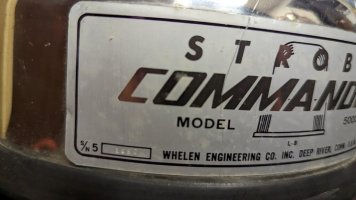
Lexan style single flash Commander serial # 5-4384
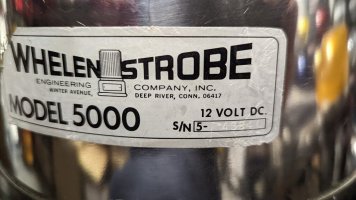
(Very lightly) later single flash lexan style Commander serial # 5083
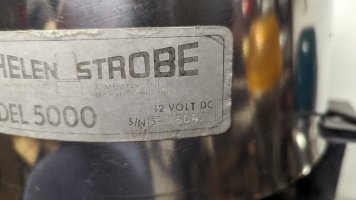
Last gen Strobe II double flash Commander 5000 Serial # 50/2/2047

And of reference here are a few groups of Commanders (5000 glass, 5000 single flash lexan, 5000 strobe II lexan and 5200)
